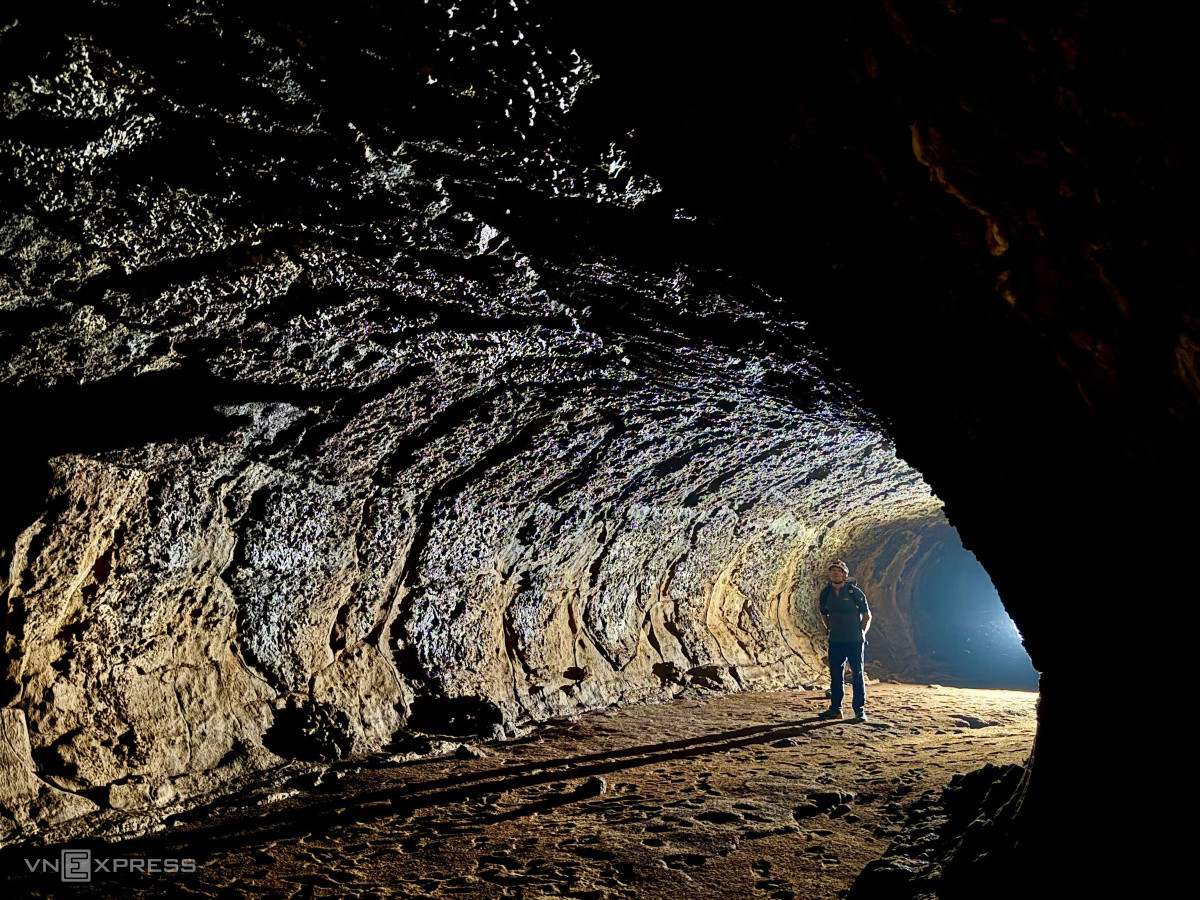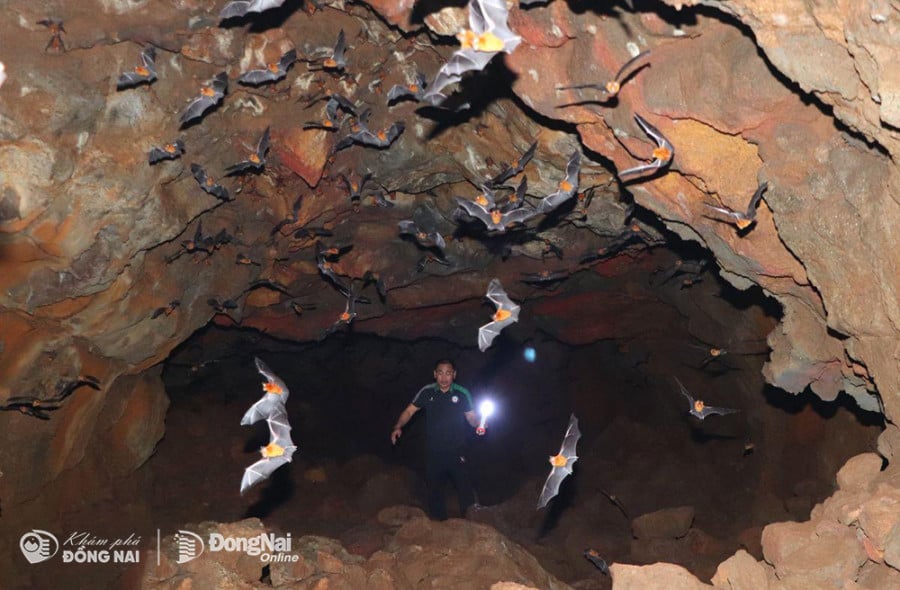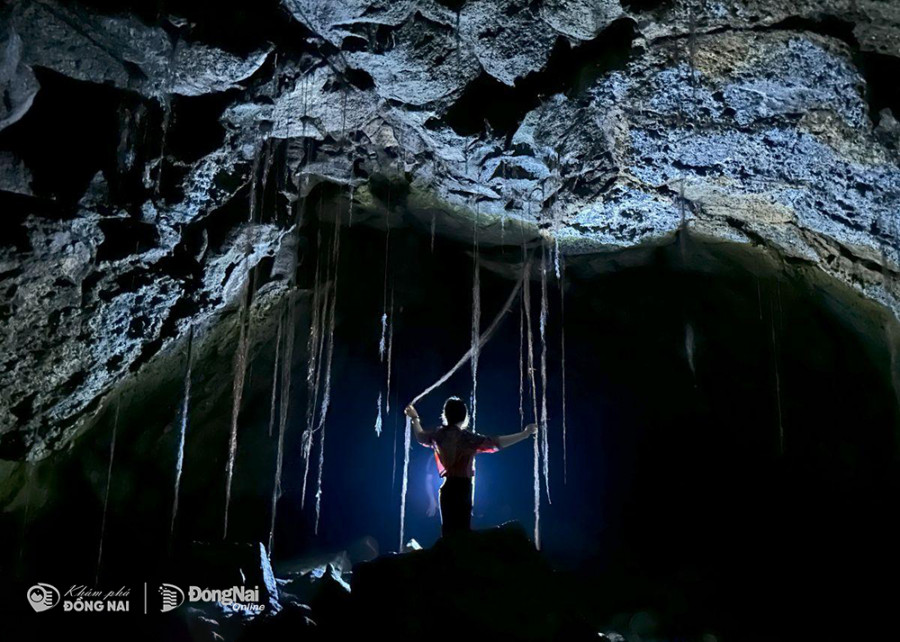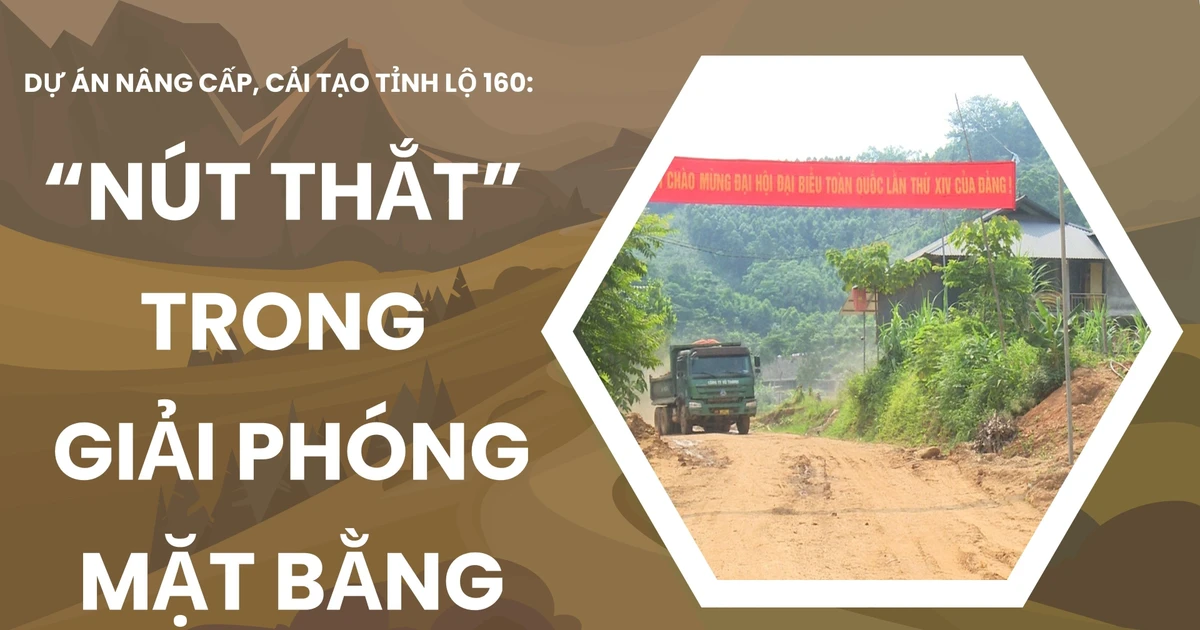
This volcanic cave complex is located in the rosewood forest area of Phu Hoa commune, Dong Nai province, and has many unique potentials but has not been fully exploited.
The cave complex in this forest is inhabited by many bats, so local people also call it Bat Cave.
Mr. Ho Huu Duc, an officer at La Nga Agricultural Seed Station, said that Bat Cave was a shelter and hiding place for our soldiers during the resistance war against American imperialism. After the country was unified, some people came to this land to reclaim land for farming. At that time, they discovered many open-air caves. People were curious to explore, however, because the cave system ran underground, the cave entrance was narrow, and there was a lack of oxygen, so no one dared to go deeper.
Bat Cave has an arc shape, the dome above the area near the cave entrance is made up of layers of lava with many colors, mainly brown, with a layer of rock flowing into streaks of beautiful shimmering yellow. Many sections of the cave are lower and can reach a person's head.
According to a survey by scientists , the longest section of Bat Cave is 426m, forming a continuous, unbroken cave strip, which is recorded as the widest part of the cave with a height of 4m and a width of 10m. If considered as the only cave in the system, including the collapsed part, this bat cave has a total length of 534m and is considered one of the 5 longest lava caves in Southeast Asia.
According to the published documents of the Institute of Tropical Biology (Vietnam Academy of Science and Technology), in February 2013, researchers from the Institute of Tropical Biology and the Berlin Cave Association (Federal Republic of Germany) conducted a preliminary survey of a group of lava caves in Tan Phu district, Dong Nai province, along National Highway 20 to Da Lat.
The caves were formed when lava flows, possibly of the Quaternary period, from numerous small cone volcanoes in Phu Tan and Dinh Quan districts, Dong Nai province. This process created typical tube-shaped cave passages near the surface that were only known when the cave mouths collapsed. The team surveyed 11 lava tubes with a total length of 1.8 km.

“The longest cave found is Bat Cave, a long cave separated by a collapse and fault creating two caves including Bat Cave 1 and Bat Cave 2. The cave has several branches and connections as well as many entrances. The widest recorded place of Bat Cave is 4m high and 10m wide,” said the document of the Institute of Tropical Biology.
The caves in this area are inhabited by many species of animals. Bats are quite abundant, with populations of up to thousands in some caves. There are also many other species of animals belonging to the spider, centipede, scorpion, cave cricket, etc.

Currently, local authorities are promoting the protection of the lava cave complex. In some areas, the Nature Conservation Association has posted signs asking people not to enter the cave to hunt bats in order to protect the uniqueness and biodiversity of the creatures living in the cave.
The leader of La Nga Agricultural Seed Station said that because the Gia Ty forest is strictly protected, in recent years, few people have trespassed into the forest or entered the caves to explore. The forest management unit and local authorities have promoted the people to join hands in protecting the cave system as well as the forest, and not to enter the caves to hunt animals, especially bats.
Several groups of cave experts have come to survey and propose to coordinate with the locality to build and organize a cave exploration tourist site. However, to date, the locality and units have not agreed on the planning as well as the exploitation and conservation of this unique volcanic cave system.
Source: https://baoninhbinh.org.vn/kham-pha-hang-doi-o-dong-nam-mot-trong-5-hang-dong-nui-lua-dai-nhat-dong-nam-a-250821152137181.html



























![[Photo] An Phu intersection project connecting Ho Chi Minh City-Long Thanh-Dau Giay expressway behind schedule](https://vstatic.vietnam.vn/vietnam/resource/IMAGE/2025/8/21/1ad80e9dd8944150bb72e6c49ecc7e08)



































![[Photo] Politburo works with the Standing Committee of Hanoi Party Committee and Ho Chi Minh City Party Committee](https://vstatic.vietnam.vn/vietnam/resource/IMAGE/2025/8/21/4f3460337a6045e7847d50d38704355d)

































Comment (0)